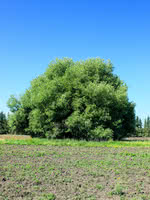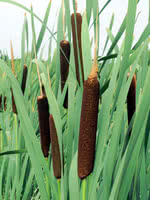Mon-Fri 9am - 5pm Mountain time
Acute Willow vs Common Cattail
Salix acutifolia
Typha latifolia
CUSTOM GROW
Acute Willow is a very fast growing small tree that can reach growth rates of up to 6 feet per year. It's a great choice for developing a quick, hardy shelterbelt, windbreak, or privacy screen.
Acute Willow will grow multi-stemmed but can be pruned to a single stem for a smaller footprint. It prefers moist areas and requires almost no maintenance.
Willows are important to native pollinators each spring as they have higher amounts of pollen and nectar early each growing season when other food sources are scarce.
Cattail is found all across North America, growing next to water. Like other waterside plants, Cattail provides erosion control and forage for animals.
It is suitable for land reclamation. Cattail is able to tolerate cold weather and occasional flooding.
Acute Willow Quick Facts
Common Cattail Quick Facts
In row spacing: 2.4 m (8 ft)

